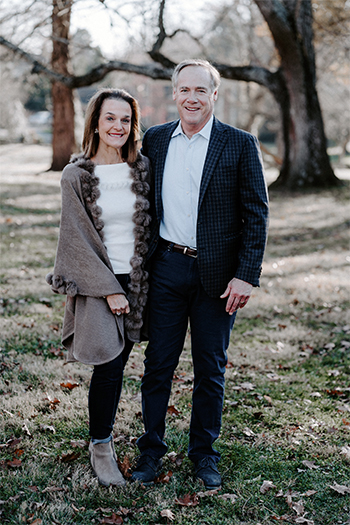Chronic Myeloid Leukemia Survivor
Be Proactive and Bring a Positive Attitude
 When Bill Tafel needed an allogeneic bone marrow transplant for his chronic myeloid leukemia, he discovered how difficult it can be to find a match. Determined to increase the list of potential donors, he found a way to add more donors to the National Marrow Donor Registry. He encourages people to be their own advocate and to be proactive in their care.
When Bill Tafel needed an allogeneic bone marrow transplant for his chronic myeloid leukemia, he discovered how difficult it can be to find a match. Determined to increase the list of potential donors, he found a way to add more donors to the National Marrow Donor Registry. He encourages people to be their own advocate and to be proactive in their care.
Edema and fatigue began in early 1993 when I was 36. By March, the doctor said I had leukemia, but more tests were needed to find out which type. This news was stressful because it came on the day of my daughter’s birthday party while my wife, Rebecca, was eight months pregnant with our third child. I delayed telling my wife a day so she could enjoy the family birthday party before I shared my diagnosis.
Despite not knowing which type I had, I immediately went to the library and began researching everything I could find in books and magazines about leukemia. The information was discouraging because it seemed to me that the prognosis would not be good.
Additional tests later confirmed I had chronic myeloid leukemia (CML) in the blast crisis phase. My doctor immediately started me on high-dose chemotherapy and radiation therapy for about three weeks to knock the leukemia down, which put me into remission. He also encouraged me to have an allogeneic bone marrow transplant (one that uses a donor) in the future. As BMT was still a relatively new procedure, I did research to find a hospital with extensive experience and expertise in doing them.
My research indicated that place was across the country.
By July, tests showed I was coming out of remission, indicating it was time to do the BMT. I was concerned about leaving my wife, infant daughter and two other children in Louisville, Ky., and I worried what would happen to them if I didn’t return home. My wife helped me make the decision. She asked me, “If the situation were reversed, would you want me to go to the best place possible?” I said, “Absolutely.” She responded, “Then let’s do it!” That made me feel more confident.
To begin the process, I had HLA typing to get matched with a donor. It was discouraging to learn that from a list of 900,000 potential donors in the National Marrow Donor Program including Canada, England or Germany, there wasn’t a match. I faced the choice of giving up or getting involved. I decided to do something about it.
I discovered that the Red Cross routinely collects the bone marrow types of people who donate platelets, which help blood to clot. But for privacy reasons, this information wasn’t shared with the registry. Seeing the untapped potential of that information, I was determined to change this so that volunteers could sign a form to share their information with the bone marrow registry. Management at Red Cross suggested I contact Senator Elizabeth Dole in Washington, D.C. I called her office frequently, and one day I even went to her office. Her appointment secretary arranged for me to ride with Mrs. Dole on her way to the airport.
While sharing the ride, I explained my idea and she liked it. She sent letters to Red Cross centers to ask donors to consider being registered with the National Marrow Donor Registry when they donate platelets. Several Red Cross centers began sending letters to platelet donors asking if they’d also sign up for the marrow registry. Although there’s been progress, more needs to be done.
Luckily, a few months later, a woman from France was a match for me. I flew to the hospital I’d chosen and received the transplant in November. The next three months were very difficult. I had high fevers from a rare infection the doctors struggled to identify. Once they identified it, they were able to treat it, and I was released from the hospital in February.
Taking steroids for seven months post-transplant weakened my bones, and I had to have both hips replaced in 1996 as a result. That same year, I had cataract surgery because of damage from the radiation therapy.
Support from my wife, family and friends was so important. Coworkers donated their frequent flyer miles so that family members could visit me while I was at the hospital across the country. That really kept me going.
Remember, a good attitude can make all the difference in the world. Be proactive about learning all you can. It’s your body. Be your own best advocate. Don’t hesitate to ask questions, even the ones you think are dumb.
I don’t worry about a recurrence, but if it comes back, we’ll treat it. In the meantime, I continue working to get more Red Cross centers to ask platelet donors to consider being in the bone marrow registry, and I’m working toward a goal of coordinating all of the national donor programs, including bone marrow, blood and organs so more people can find matches and save lives.


